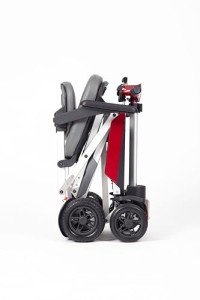Understanding Mobility Devices: Enhancing Independence and Quality of Life
In today's fast-paced world, the desire for mobility is universal. Nevertheless, certain medical conditions or age-related challenges can impede movement, causing an ongoing search for assistance. Mobility devices function as necessary tools to improve self-reliance, enhance lifestyle, and enable people to engage totally in their neighborhoods. This short article supplies a comprehensive introduction of mobility devices, including their types, features, selection requirements, and more.
Types of Mobility Devices
Mobility devices range from easy aids to complex equipment, tailored to fulfill different requirements. Below is a table summarizing typical kinds of mobility devices:
| Type of Device | Description | Ideal For |
|---|---|---|
| Walkers | Four-legged support devices that offer exceptional stability while strolling. | Individuals needing additional support. |
| Walking canes | Single or three-legged sticks that enhance balance and support walking. | Those with minor mobility problems. |
| Wheelchairs | Seats installed on wheels, available in manual and electric variations. | People with restricted or no mobility. |
| Scooters | Electric cars designed for outdoor use and ease of navigation. | Those who can't walk long distances. |
| Crutches | Devices that assist people move weight away from an injured leg. | Individuals recuperating from leg injuries. |
| Rollators | Walkers with wheels, seats, and brakes for enhanced mobility. | Users needing rest alternatives while strolling. |
| Raise Chairs | Reclining chairs that assist users in standing up and sitting down. | Seniors or those with mobility constraints. |
| Mobility Scooters | Small electric cars for restricted mobility, frequently used outdoors. | People requiring support over cross countries. |
Key Features of Mobility Devices
When choosing a mobility device, several key functions must be thought about to guarantee optimal performance and ease of usage:
- Weight Capacity: Understanding the device's weight restriction is important for security and effectiveness.
- Adjustability: Devices ought to be adjustable in height and width to fit the user conveniently.
- Portability: Lightweight and foldable options are essential for users who travel or need transport.
- Stability and Safety: Look for functions like anti-tip wheels and sturdy structures to enhance safety.
- Relieve of Use: Simple mechanisms and user-friendly designs can make a significant difference in day-to-day use.
- Comfort: Ergonomic styles and padded seats can improve the user experience.
Selecting the Right Mobility Device
Choosing the best mobility gadget can be a difficult job. Here are some steps to assist the decision-making process:
- Assess Needs: Evaluate the person's mobility difficulties and daily activities.
- Speak with a Professional: Engage health care experts who can supply recommendations based on the person's physical condition.
- Trial Options: If possible, trial different devices to identify convenience and functionality.
- Evaluation Budget: Consider the expense of the gadget, consisting of any additional functions or modifications needed.
- Research Options: Determine the best brand names and designs by checking out reviews and contrasts.
Table: Comparative Analysis of Popular Mobility Devices
| Device | Benefits | Downsides |
|---|---|---|
| Walkers | Excellent stability, promotes walking. | Bulky, might restrict movement in small spaces. |
| Canes | Lightweight, boosts balance. | May not supply sufficient support for severe mobility problems. |
| Wheelchairs | Ideal for those with substantial mobility restrictions. | Can be cumbersome, especially in indoor environments. |
| Scooters | Great for outdoor use, easy to maneuver. | Restricted indoor functionality, heavier. |
| Rollators | Supplies rest option, easy to move. | May need more space than traditional walkers. |
| Lift Chairs | Comfortable, helps transition from sitting to standing. | More costly, larger footprint. |
Often Asked Questions (FAQs)
1. What is a mobility gadget?
A mobility device is any tool designed to help people in moving and browsing their environment. This consists of walkers, wheelchairs, scooters, and crutches.
2. How do I know which mobility device is best for me?
Consider your particular mobility difficulties, physical capabilities, and way of life needs. Consulting with health care specialists can likewise offer tailored recommendations.
3. Are mobility devices covered by insurance?
Lots of insurance strategies, including Medicare, may cover certain mobility devices. It's important to consult your insurance coverage company for particular coverage details.
4. Can I lease a mobility device instead of buying one?
Yes, lots of medical supply stores and pharmacies provide rentals for mobility devices. This alternative is useful for people with short-term mobility concerns.
5. How can folding mobility scooters for elderly preserve my mobility gadget?
Regular maintenance is important. It includes cleaning up the gadget, inspecting for wear and tear, and ensuring all parts are operating properly.
The Impact of Mobility Devices on Quality of Life
Mobility devices substantially improve the quality of life for individuals with limited mobility. They foster independence, motivate social interaction, and improve access to vital services and recreational activities.
- Increased Independence: Users can navigate their neighborhoods, attend occasions, and take part in pastimes without relying on others.
- Social Engagement: Mobility devices assist in involvement in social events, thereby combating sensations of isolation.
- Boosted Safety: Devices offer stability and minimize the danger of falls, promoting user self-confidence.
Mobility devices are more than just tools for motion; they are entrances to independence and quality living. By comprehending the various types of mobility aids available, their key functions, and factors to consider for choosing the ideal device, people can make informed decisions about their mobility needs. Ultimately, the ideal mobility device can result in a more active, fulfilling life. Whether it's a walker, wheelchair, or scooter, the ideal choice contributes substantially to enhancing the mobility and independence of users.

